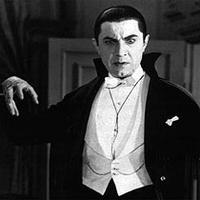
(1931)****
I’ve never been a fan of the Dracula mythos. Compared to the other classic horror icons Dracula has always seemed kind of lackluster to me. When Universal started releasing box sets of its most popular horror characters, I decided that it was time to go though all of these old monster movie franchises (i.e., Dracula, The Wolf Man, Frankenstein, The Creature From the Black Lagoon, The Invisible Man, and The Mummy). I went through a lot of them last year but I skipped the Dracula set due to my preconceived ideas about the lameness of the character. As a completist, I felt compelled to tackle Dracula this year.
Dracula (1931) is regarded as one of the most important and influential horror films of all time. The character had been on the silver screen previously (i.e., see Octopunks’ review of Nosferatu), but this is the one that set all of the above-mentioned franchises rolling. By now, most know the basic story taken from Abraham ("Bram") Stoker's 1897 novel Dracula; a lawyer, Renfield, travels to Transylvania to meet with Count Dracula in order to arrange the lease of a home in England. After being welcomed into Dracula’s creepy castle, he us subsequently drugged and kidnapped. When Dracula’s chartered boat crashes near the home that Renfield was attempting to lease, Renfield is found aboard the ship raving like a lunatic and eating bugs. He is immediately committed to a “sanitarium” under the care of Dr. Seward. Meanwhile Dracula hobnobs with the elite of England and attracts the attention of Lucy Weston. After Dracula turns into a bat and arrives at her window, Lucy is found dead, drained of blood. Setting his sights on Dr. Seward’s daughter, Mina, Van Helsing figures out that Dracula is a vampire and sets out to stop him.
Although a bit slow at times, it is easy to see why Browning’s Dracula is historically important. Creating an incredibly eerie and atmospheric setting, Browning uses a lot of fog, creepy sets, and clever tracking shots to capture the essence of this undead character. Bela Lugosi is Dracula. Everything that we know about Dracula today comes from this one groundbreaking performance. The manner in which he speaks, the way he walks, and his chilling stare are all Lugosi. Apparently Lugosi actually spoke like that in real life and was not doing it as a character affectation. In the end Van Helsing triumphs and Dracula is no more, or so it would seem.



No comments:
Post a Comment